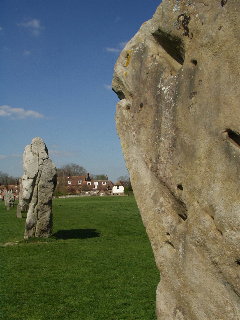
Play for Today is a British television anthology drama series, produced by the BBC and transmitted on BBC1 from 1970 to 1984. During the run, more than three hundred programmes, featuring original television plays, and adaptations of stage plays and novels, were transmitted. The individual episodes were between fifty and a hundred minutes in duration. A handful of these plays, including Rumpole of the Bailey, subsequently became television series in their own right.
Suzanne Danielle, née Morris is an English former film and television actress.

The Stone Tape is a 1972 British television horror drama film written by Nigel Kneale and directed by Peter Sasdy and starring Michael Bryant, Jane Asher, Michael Bates and Iain Cuthbertson. It was broadcast on BBC Two as a Christmas ghost story in 1972. Combining aspects of science fiction and horror, the story concerns a team of scientists who move into their new research facility, a renovated Victorian mansion that has a reputation for being haunted. The team investigate the phenomenon, trying to determine if the stones of the building are acting as a recording medium for past events. However, their investigations serve only to unleash a darker, more malevolent force.

Dark Castle Entertainment is a film, TV, and digital projects production label. It is owned by North American sports and entertainment company, OEG Inc. The firm is led by co-CEOs Hal Sadoff and Norman Golightly.

Tigon British Film Productions or Tigon was a film production and distribution company, founded by Tony Tenser in 1966.
Lawrence Gordon Clark is an English television director and producer, screenwriter, and author, best known for creating the supernatural anthology series A Ghost Story for Christmas, which originally aired on BBC One from 1971–1978, with Clark directing all but the final instalment as well as writing and producing the first two, The Stalls of Barchester (1971) and A Warning to the Curious (1972). The first five of these were based on the ghost stories of M. R. James, as was Casting the Runes (1979) which he directed for the ITV drama anthology series Playhouse.
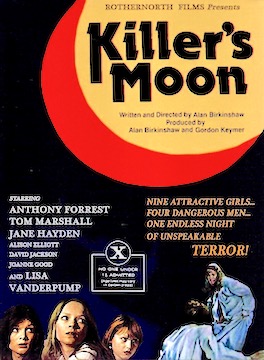
Killer's Moon is a 1978 British slasher film written and directed by Alan Birkinshaw, with uncredited dialogue written by his novelist sister, Fay Weldon, and starring Anthony Forrest, Tom Marshall, Jane Hayden, JoAnne Good, Nigel Gregory, David Jackson and Lisa Vanderpump. It follows a group of schoolgirls on a choir trip who are terrorized by four escaped psychiatric patients on LSD while staying in a remote hotel in the Lake District.

"Whistle and I'll Come to You" is a supernatural short television film which aired as an episode of the British documentary series Omnibus. Written and directed by Jonathan Miller, it is based on the ghost story "'Oh, Whistle, and I'll Come to You, My Lad'" by M. R. James, first published in the collection Ghost Stories of an Antiquary (1904), and first aired on BBC1 on 7 May 1968.

A Ghost Story for Christmas is a strand of annual British short television films originally broadcast on BBC One between 1971 and 1978, and revived sporadically by the BBC since 2005. With one exception, the original instalments were directed by Lawrence Gordon Clark and the films were all shot on 16 mm colour film. The remit behind the series was to provide a television adaptation of a classic ghost story, in line with the oral tradition of telling supernatural tales at Christmas.
Maxine Gordon is a British actress. She played Jane Edmonds in the 1972 Sidney Lumet film The Offence.
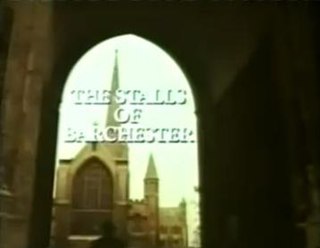
The Stalls of Barchester is a short film which serves as the first of the British supernatural anthology series A Ghost Story for Christmas. Written, produced, and directed by the series' creator Lawrence Gordon Clark, it is based on the ghost story "The Stalls of Barchester Cathedral" by M. R. James, first published in the collection More Ghost Stories (1911). It stars Robert Hardy as Archdeacon Haynes of the fictional Barchester Cathedral, whose mysterious death is investigated 50 years later by the scholar Dr. Black, and first aired on BBC1 on 24 December 1971.

Dæmos Rising is a direct-to-DVD spin-off of the long-running British science fiction television series Doctor Who. It was released direct-to-video and produced by the independent production company Reeltime Pictures. It is a sequel to the Third Doctor serial The Dæmons and the 1995 Reeltime video Downtime and is also a tie-in to Telos Publishing's Time Hunter range of books, another Doctor Who spin-off.
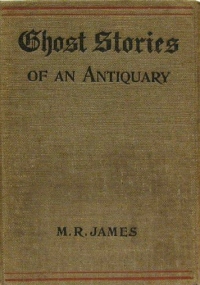
"The Ash-tree" is a ghost story by British writer M.R. James, included in his 1904 collection Ghost Stories of an Antiquary.
The Ice House is the last of the eight short films originally broadcast as part of the BBC's A Ghost Story for Christmas series of the 1970s, the first not directed by Lawrence Gordon Clark; Clark had become a freelance director and was working for ITV. The film was instead directed by Derek Lister.
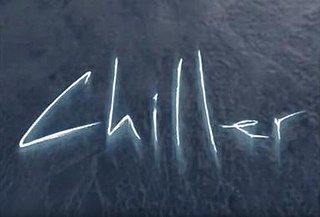
Chiller is a five-part British horror fantasy anthology television series, produced by Yorkshire Television, that first broadcast on ITV on 9 March 1995. Described by The Guardian as ITV's "answer to The X Files", the series was inspired by, but unconnected to, the 1991 Channel 4 thriller Gray Clay Dolls, which broadcast under the Chiller banner, the series featured writing contributions from renowned playwrights Stephen Gallagher, Glenn Chandler and Anthony Horowitz.
Folk horror is a subgenre of horror film and horror fiction that uses elements of folklore to invoke fear and foreboding. Typical elements include a rural setting, isolation, and themes of superstition, folk religion, paganism, sacrifice and the dark aspects of nature. Although related to supernatural horror film, folk horror usually focuses on the beliefs and actions of people rather than the supernatural, and often deals with naïve outsiders coming up against these. The British films Blood on Satan's Claw (1971), The Wicker Man (1973) and Witchfinder General (1968) are regarded as pioneers of the genre, while The Witch (2015) and Midsommar (2019) sparked renewed interest in folk horror. Southeast Asian cinema also commonly features folk horror.

The Treasure of Abbot Thomas is a short film which serves as the fourth episode of the British supernatural anthology television series A Ghost Story for Christmas. Written by John Bowen, produced by Rosemary Hill, and directed by the series' creator, Lawrence Gordon Clark, it is based on the ghost story of the same name by M. R. James, first published in the collection Ghost Stories of an Antiquary (1904), and first aired on BBC1 on 23 December 1974.

Lost Hearts is a short film, the third of the British supernatural anthology series A Ghost Story for Christmas. Written by Robin Chapman, produced by Rosemary Hill, and directed by the series' creator, Lawrence Gordon Clark, it is based on the 1895 ghost story of the same name by M. R. James and first aired on BBC1 on 25 December 1973. It is the first instalment to have been broadcast on Christmas Day itself, and one of only three in the series' history.

A Warning to the Curious is a short film, the second of the British supernatural anthology series A Ghost Story for Christmas. Written, produced, and directed by the series' creator, Lawrence Gordon Clark, it is based on the ghost story of the same name by M. R. James, first published in the collection A Warning to the Curious and Other Ghost Stories (1925) and first aired on BBC1 on 24 December 1972. At 50 minutes it is the longest instalment in the series' original run.

The author and medievalist M. R. James (1862-1936) wrote over 30 ghost stories, which have been widely adapted for television, radio, and theatre. The first adaptation of one of his stories was of A School Story for the BBC Midlands Regional Programme in 1932, the only one produced in James' lifetime. The only notable film adaptation is Night of the Demon (1957), directed by Jacques Tourneur and based on Casting the Runes, which is considered one of the greatest horror films of all time. The most celebrated adaptations of his works are those produced for British television in the 1960s and 1970s, which have made him, according to critic Jon Dear, “the go-to folk horror writer for television.”

